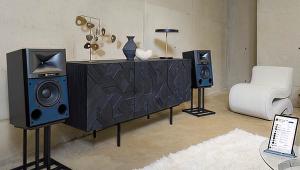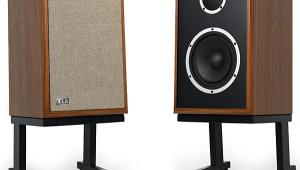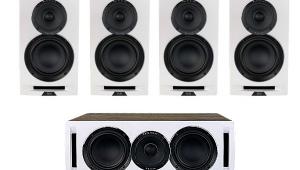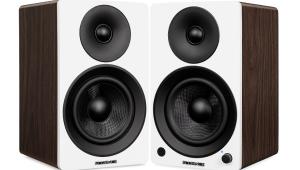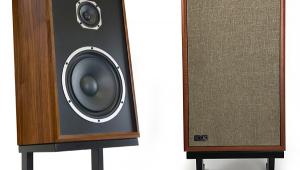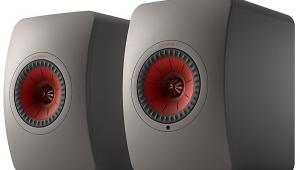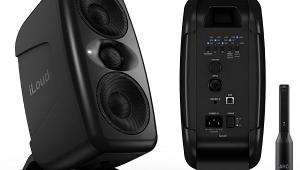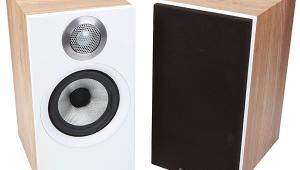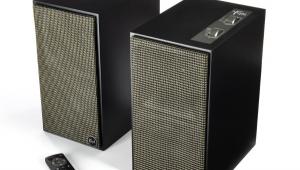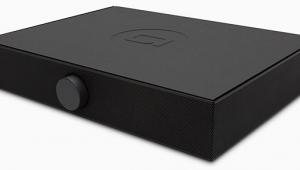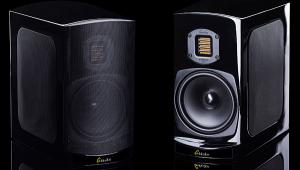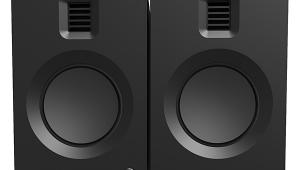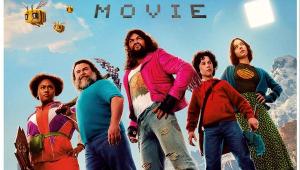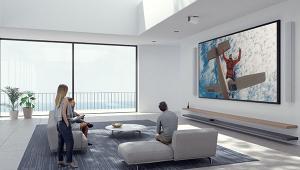DCM Cinema2 Speaker System
Nowhere is the universal human desire to get something for nothing more evident than in consumer electronics. While I'm always amenable to reviewing mass-market gear that offers high value to the consumer, I also spend a large portion of my time convincing more discerning listeners that an investment in higher-priced gear is really worth it. Why, then, would I work up a froth of enthusiasm for a modest subwoofer/satellite set like the DCM Cinema2? It would be convenient simply to say that I heard it and liked it, but the truth doesn't always lend itself to a glib lead.
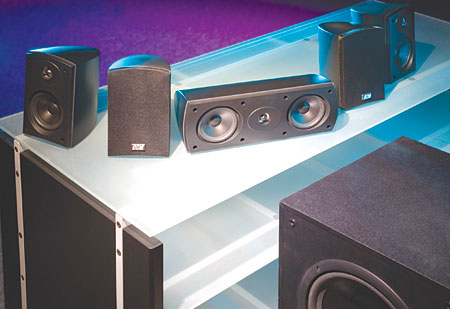
What happened was that I heard another DCM product and liked it. The triggering event took place at the 2007 Home Entertainment Show in New York. One of DCM's floorstanding models, the TFE200, was playing in a demo room. When I ducked my head in, what I experienced was enough to make me flash a business card and start asking questions. Before I knew it, I had a brochure in my hand and a question in my mind—would DCM's abundantly apparent competence extend to the Cinema2 set? If so, I might finally have an answer for the consumer who asks about surround speaker packages under $500—in this case, actually, $399.
From the Land of Lincoln
DCM is an Illinois-based company founded in 1974. It has three lines of conventional floorstanding and stand-mount speakers, in addition to in-ceiling, in-wall, and all-weather models. The Cinema2 is one of two sub/sat sets. It consists of four identical satellites, a horizontal center, and a subwoofer with a 10-inch driver and 100-watt amp. There is also a Cinema1 package that includes the same speakers with different terminals, a smaller center, and a smaller 8-inch sub with a 50-watt amp for $299, or $100 less.
The satellite's rounded enclosure is more than 7 inches tall but somehow looks smaller. Unless you have an eye for detail, you might never notice the way the front baffle is angled slightly back. This makes the Cinema2 an excellent choice for wall- or stand-mounting below the bottom edge of a flat-panel display. You can wall- or stand-mount all three front speakers below the bottom edge of the screen, and they'll aim slightly upward toward the seating position. That's much better to me than having two speakers on either side of the screen and the center below it; that kind of placement ruins the fluidity of side-to-side pans and pulls me out of the moment. (Four mounting brackets are included.)
On the back are plastic-nut, gold-plated binding posts. They provide a more secure connection than the cheap and nasty wire clips found on run-of-the-mill HTIB speakers. DCM clearly had wall mounting in mind—the posts are recessed to prevent them from jutting out. And there's a threaded insert in the back to accept mounting hardware.
The materials are nothing special. The enclosures are injection-molded plastic, except for the sub, which is made of 0.63-inch-thick medium-density fiberboard resting on hard plastic cones, claimed to control resonance. The driver's diaphragms are also plastic. The 0.5-inch tweeter is made of PEI, or polyester imide, a copolymer with high heat resistance, while the 3.5-inch midwoofer (DCM refers to it as a midrange) is made of polypropylene with mica filler. The sub driver is a high-density paper cone. All of the drivers feature rubber surrounds.
Things you need to know about the specs: The satellites have low sensitivity ratings (as is expected for their size,) meaning they'll need some power to play loud in some rooms—possibly more than some budget receivers could muster. The satellites are rated at 84 decibels, while the center is a slightly more efficient 87 dB. Both of these numbers are specified at 2.83 volts and a distance of 1 meter, which is a much more useful detail than usual. The sub's 10-inch woofer is backed with a 100-watt amp, and it's rated using the peak (as opposed to the tougher RMS) method.
Black Snake Wow
Even now, at this jaded stage of my career, there are moments when cinema and surround sound combine to make my jaw hit the floor with a clunk. One of them was the scene in Black Snake Moan where Christina Ricci sits at the feet of Samuel L. Jackson as he delivers a sung and spoken, electric guitar charged monologue that contains the movie's title phrase. A thunderstorm filled all channels as the rich, hollow-bodied Gibson guitar sound flared like colored light. Wow, wow, wow, and wow. The DCM delivered this orgy of midrange tone color well enough to leave me dizzy.
The dominant sound effect of Shooter is gunfire, inevitable in a movie with Mark Wahlberg cast as a former military sniper who gets dragged into a conspiracy to assassinate world leaders. Normally, this would set my teeth on edge, but the rat-tat-tat was gentle enough to pull me into the plot, modest and obvious though it was.
Although the Cinema2 did a good job of delivering dialogue, it did require a higher master-volume setting on my Rotel RSX-1065 surround receiver than most sub/sat sets—typically around 60 out of a maximum of 90 versus an average of 50 to 55. Breach actually required a setting of 65 to tell the story of Robert Hanssen, the FBI agent who spied for the Soviets. Granted, the hushed-as-much-as-possible air conditioner was running, but I don't recall another mini-speaker package requiring that much juice from the powerful Rotel to deliver coherent speech.
Symphonic Mood Swings
Just as they nailed the key scene of Black Snake Moan, the DCMs were adept at orchestral tone color in the DG recording of Beethoven's Seventh Symphony with Carlos Kleiber conducting the Vienna Philharmonic. True, there wasn't as much high-frequency extension in the strings as a no-holds-barred speaker system would muster. Nevertheless, the midrange was sweet, gentle, slightly soft-edged, and not at all unpleasant at high volumes—which Beethoven's symphonic mood swings practically demand.
I'm an old Fairport Convention fan, which is probably appropriate, as they're an old band and celebrating their 40th anniversary this year. Their 35th-anniversary CD XXXV emerged mellow and warm. Gerry Conway's fat drum sound was a bit less prominent than I liked, even after I turned up the sub volume. There's only so much you can do with 100 peak watts.
When bass wasn't of the essence, the system interacted well with music that some speakers make me shy away from. For instance, I love Robert Fripp's Soundscapes, a series of guitar-activated synthesizer recordings based mainly on live performances, but I tend not to listen to them at high volumes. Even so, the DCMs made me glad to hear Churchscapes—Live in England and Estonia 2006 at foreground volumes, something I'd be reluctant to try with at least two-thirds of the speakers I've reviewed in the past year. This certainly shows that these speakers sound different than many of their more expensive counterparts, not necessarily in an outwardly unpleasant way, but different nonetheless.
While I hope Home Theater readers are willing to spend more than $399 for a speaker system, I must admit this one sounds rather good. And there's a genuine need for this kind of product in secondary systems, starter systems, and anywhere you want to have good surround without offering up a lot of money or space. The DCM Cinema2 is now on my (very, very, very) short list of sub/sat sets for under $500.
Highlights
• Good sound, minimal investment
• Compact and easy to wall mount
• For small rooms, starter systems

